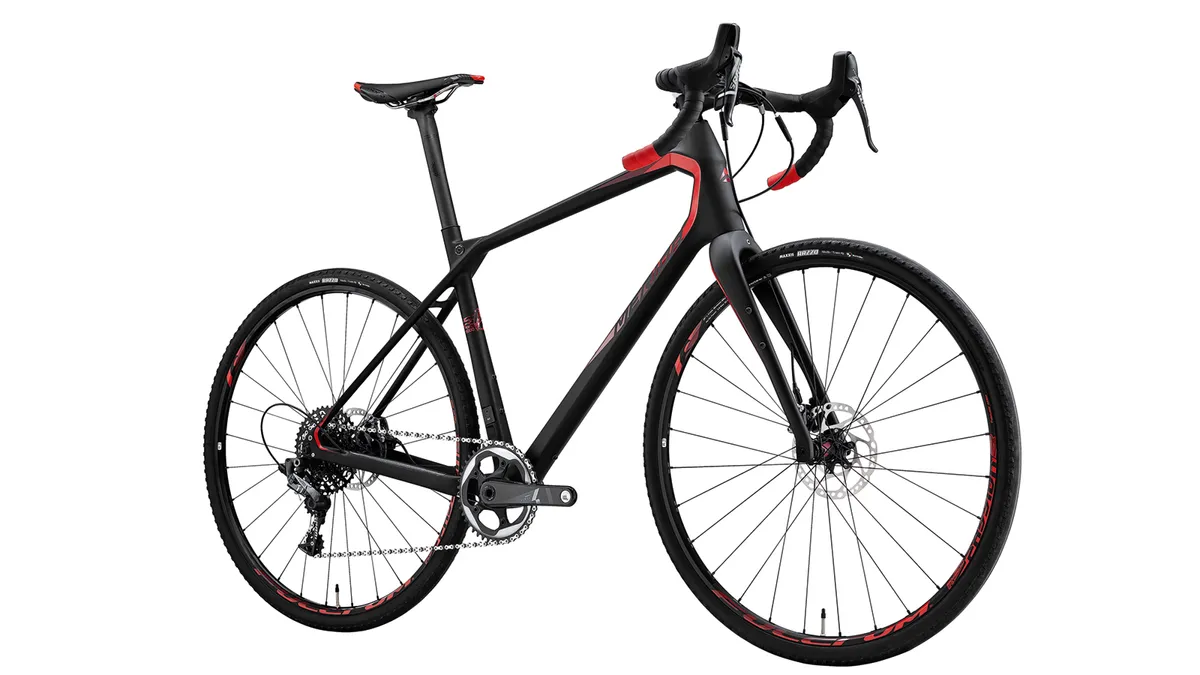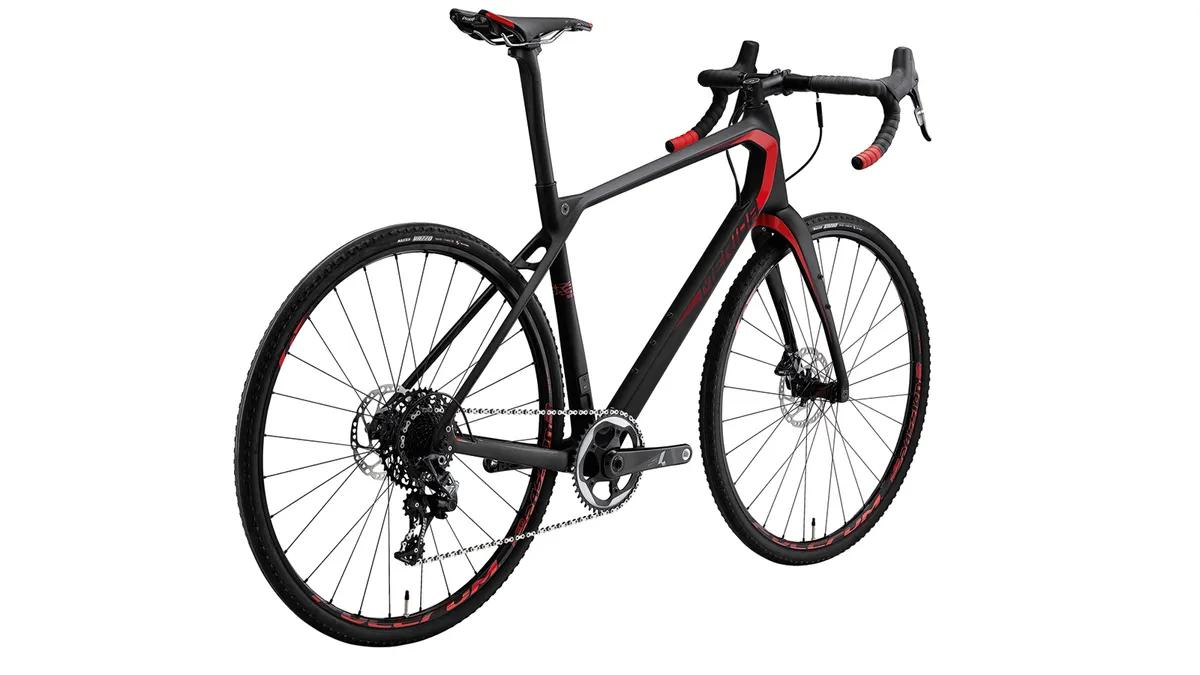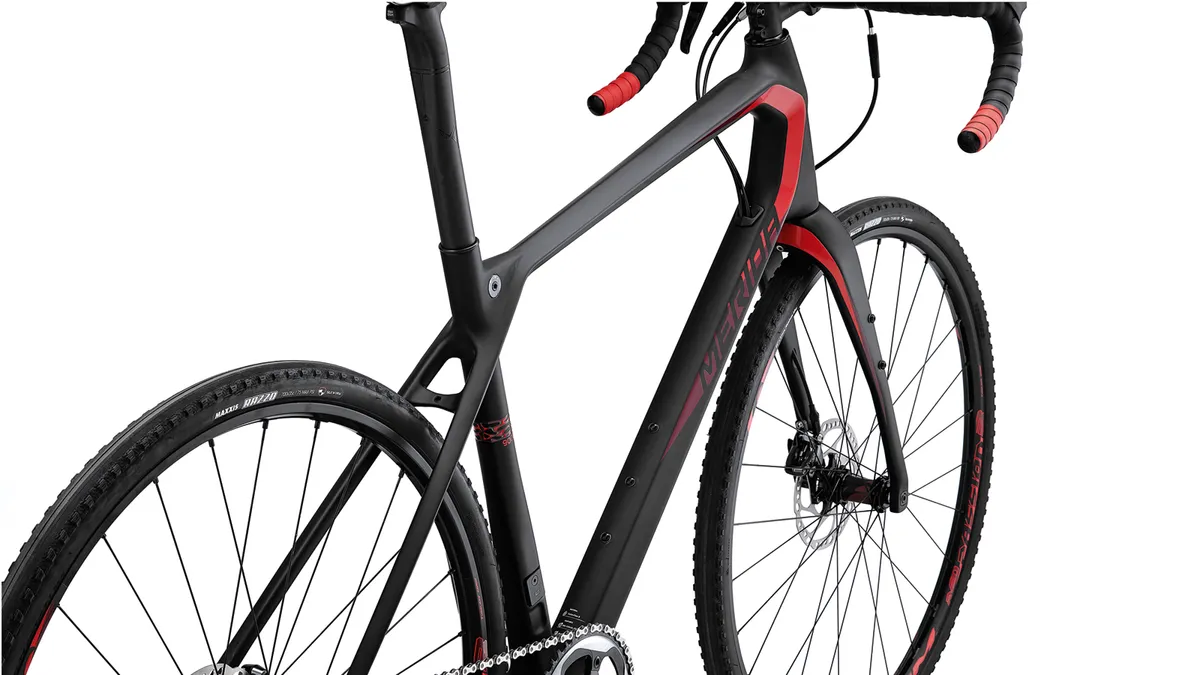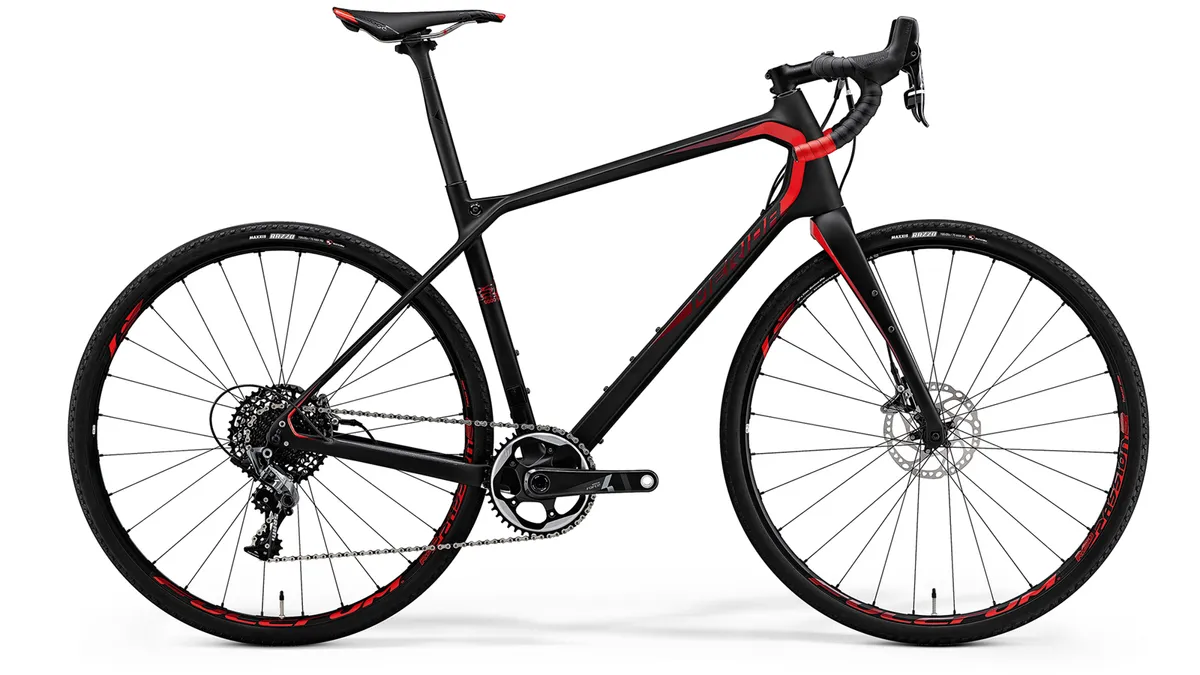With a reach of 415mm in a size large, the new Merida Silex pushes gravel bike geometry in a new direction by taking cues from the latest generation mountain bikes, where reach figures are being pushed to their limits to eek out every ounce of high-speed, steep and loose terrain stability.
Year on year, mountain bikes continue to get longer, but the geometry of gravel bikes has remained pretty stagnant, so this bike, with its — as Merida is calling it — “adventure-endurance geometry” has certainly piqued our interest.
Designed to be run with a short — short for the road anyway — 80/90mm stem, the 415mm reach on a size large Silex (56-ish-cm equivalent) is pretty darn roomy compared to the 379mm for a Specialized Diverge, 398mm for a Cannondale Slate and 383mm for a Mason Bokeh of the same size.

The stack number of 644mm (again, on a size large bike) is also considerably higher than most gravel bikes, so you should have no issues getting the bars into a high, comfortable position that will also improve control in especially steep terrain.
The 71-degree head angle is also relatively slack for a gravel bike and should stabilise high-speed handling at the cost of a slightly less nimble feeling ride at low speeds.
The 1082mm wheelbase in a size large is also particularly lengthy, further stabilising the ride.
Available in either carbon or aluminium guises, and eight different builds, Merida has designed the Silex to be a true do-it-all, any surface adventure wagon, with clearance for 700x42mm tyres or 650x2.2 tyres.
On the subject of tyres, Merida has collaborated with Maxxis to develop a 35mm wide, semi-slick tread that all of the new bikes will ship with.

The Silex also includes mudguard mounts, rack mounts and a whopping five bottle bosses — one on the seat tube, two on the down tube and one on each leg of the fork.
The bike is bolt through at both ends and uses the flat mount brake standard. In a bid to improve all-weather reliability, Merida has also specced the bike to use full-length, internally routed housing.

The alloy frame is reported to come in at 1,500g, with the carbon frame claimed to weigh 1,050g. Both bikes share the same 500g (claimed) fork.
We’ve been invited to an official launch for the bike later this year and we’ll be sure to update this article once we have more details and ride impressions.
Are you eager to try out a ‘Forward Geometry gravel bike’? Or does “adventure-endurance” geometry just sound like another name for a touring bike to you? Leave your thoughts in the comments below.

